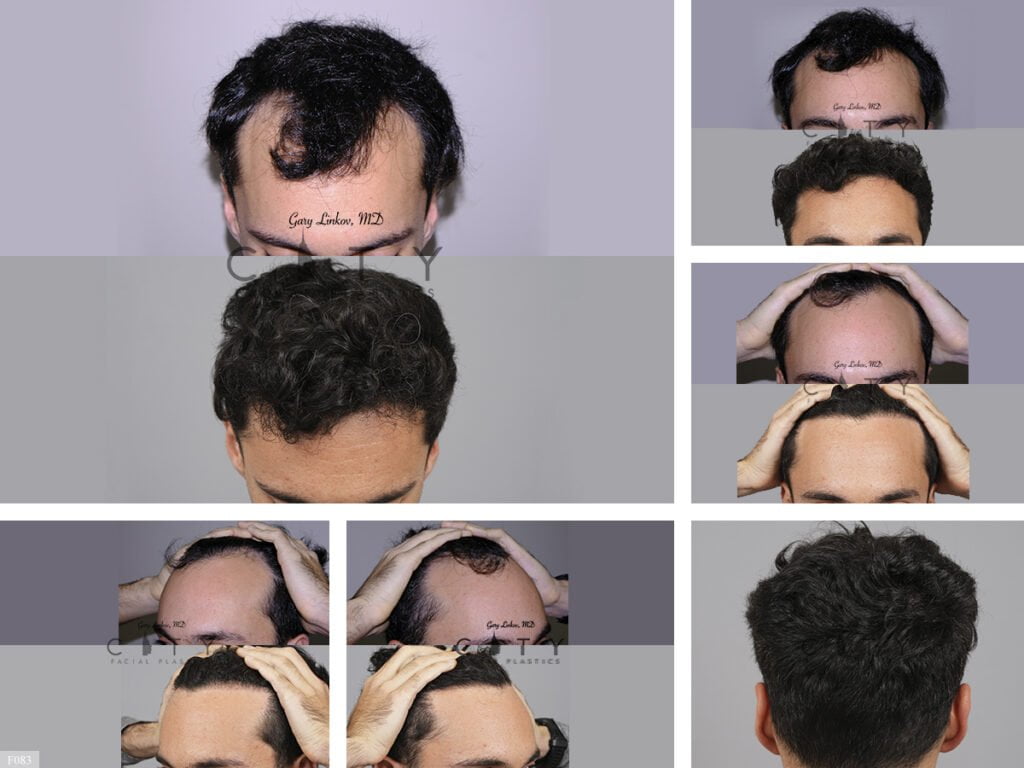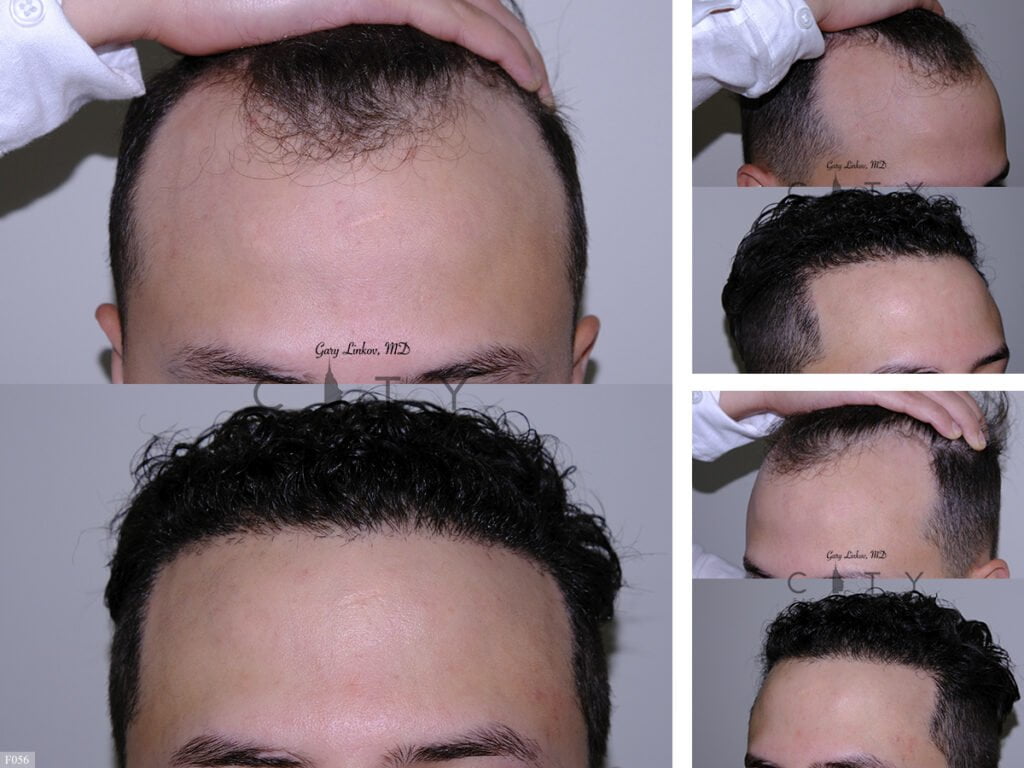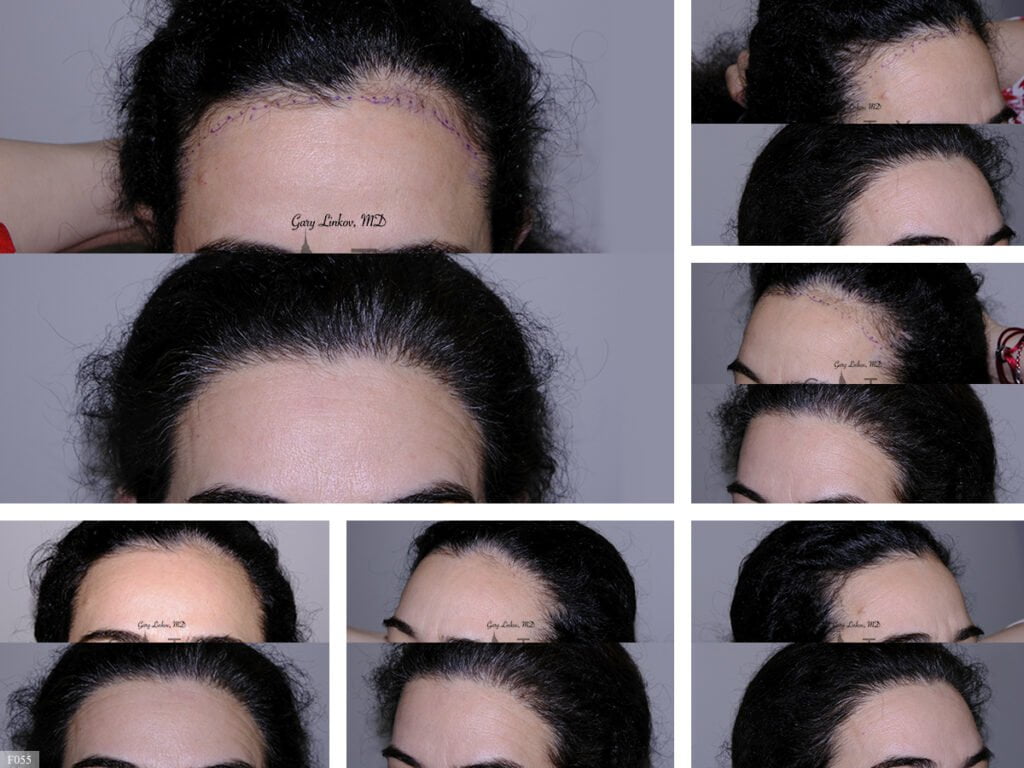Hair Cloning
Hair follicle cloning is still just theory, but it’s getting closer to becoming a real thing. Following massive research breakthroughs, hair cloning is closer to reality than ever before. As you seek to learn more about the process to restore hair that you don’t want to live without, call the expert at hair loss center in New York. Dr. Gary Linkov, an expert in hair restoration techniques, provides various forms of permanent hair loss treatments, from topical medications to surgical hair transplants. He doesn’t offer hair cloning transplants yet because the practice doesn’t yet exist. During your consultation, you learn about the numerous other methods available to restore your youthful appearance through hair restoration.
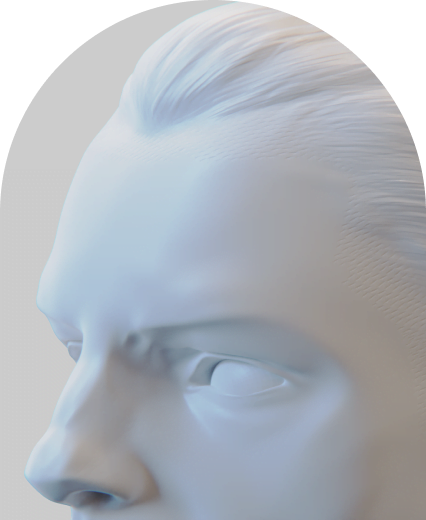
What Hair Loss Treatment for Men Is Available?
The process of hair cloning involves creating new hair from donor hair follicles from another part of your body. One follicle can be cloned into an unlimited amount of tube-like hairs, meaning fewer extractions are required. Hair follicle cloning takes place in a laboratory, just as cloning for other human cells is accomplished. Through a process called morphogenesis, hair follicles become capable of reproducing in vitro — that is, in a petri dish.
Experts are developing hair cloning technologies that would allow your donor follicles to produce new hair in quantities that are sufficient to cover up existing hair loss. The exciting new process also allows hair restoration specialists to decipher the pigmentation of your hair so that eventually, they may be able to develop drugs to maintain your original color and keep your hair from graying.
At Linkov Hair Surgery, a hair restoration doctor keeps up with the advances made in hair cloning, as well as other up-to-date treatments, to provide you with the outcome you desire. Your specialist in Manhattan reviews the possible causes of your hair loss and designs a treatment plan that suits you best. Instead of hair transplant cloning, you may receive other hair loss treatments for men and for women, such as:

How Is Hair Cloning Done?
The first researchers to discover the potential for hair follicle cloning for humans worked in Japan, while cloning cells from mice. And like many medical and scientific discoveries, by accident they found that the hair follicles on these mice cells also cloned themselves. Cloning took place under the right circumstances when researchers controlled the cells’ structures, using a specially formulated gel.
Hair cloning has received widespread attention as researchers continued to modify and perfect the process, but in Manhattan, you can’t yet receive a hair transplant using hair with the same genetic material as your original hair. Instead, ask for a transplant procedure that’s one of the current transplant treatments, the most common being:
- Follicular unit transplantation (FUT) A FUT procedure involves cutting a several inch-long strip of skin from the back of your head, where you still have hair, and then removing the follicles and implanting them into your balding or thinning areas. It typically takes anywhere from two to six hours.
- Follicular unit extraction (FUE) Instead of taking a strip of skin with hair follicles in it, the FUE procedure allows your Manhattan surgeon to extract each hair individually. Tiny holes are made in your balding or thinning areas where the extracted hairs are then embedded. This can take up to eight hours.
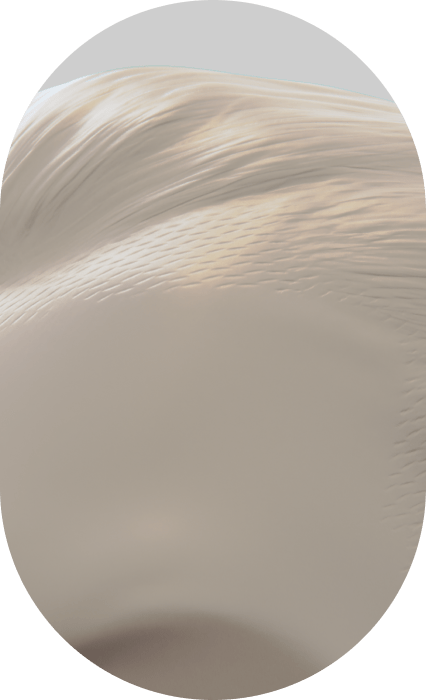
What Are the Benefits of Hair Transplant Cloning?
Theoretically, the main benefit is that you don’t have to undergo hair follicle extraction except once to get the single follicle to be cloned. Each time a strip of skin is taken from somewhere in your body, you can expect some slight scarring. While the scarring resolves itself in time, the cloning procedure doesn’t force you to deal with the hassle.
Even less invasive hair restoration procedures, such as laser therapy and medications, have mild side effects that you can avoid if you were to receive a hair cloning transplant. Other benefits of hair cloning include:
- The permanence and success of the transplant is equal to FUT and FUE procedures
- Cosmetic and pharmaceutical companies are eager to produce each new improved variation of hair cloning materials. As the science evolves, the process gets better
- Hair follicles can grow to maturity in less than a month, in theory
- It’s equally effective for men and women
- Hair loss specialists and researchers develop a greater understanding of hair growth and the loss of melanin in hair, opening possibilities for even greater insights into hair restoration
What Does Hair Cloning Cost?
Because the process of hair cloning is so new, the costs will be very high. But with permanent results, you may find it to be a useful investment, especially if your career and image demand the same type of appearance, such as a celebrity. Your hair restoration doctor in Midtown Manhattan works with you to determine the cost of the procedure that will actually help you now. Remember, hair replacement typically is considered cosmetic by insurance companies and isn’t covered.
Just like the more traditional hair restoration procedures, you first have to treat any underlying medical conditions that’s created your hair loss before you can get a hair cloning transplant. Hair cloning costs must include your investment of time and resources to address such conditions as:
Should I Consider Hair Follicle Cloning?
When you’re given the green light for a hair transplant, your doctor introduces you to other transplant options that may fit your needs, such as:
- African American hair transplants
- Transplants on other parts of your body
- Beard hair transplant
- Eyebrow transplants
- Transplant for gender transitioning
Contact the best hair restoration doctor in New York City to find out if you’re a good candidate, not for hair transplant cloning, but for other effective hair transplant techniques. Following a thorough medical evaluation that may include a physical exam and blood tests, as well as a family and medical history review, your hair loss specialist makes recommendations for the best route to reach your goals.

Dr. Gary Linkov is an experienced Ivy League-educated hair transplant surgeon. Having suffered from hair loss himself, he treats his patients with compassion using a multi-disciplinary approach based on the latest hair regrowth methodologies and technologies.
He has authored numerous peer-reviewed articles and book chapters, contributing to the field. Dr. Linkov’s expertise in hair transplant surgery has earned him recognition and made him a sought-after physician. He was featured on the Dr. Oz Show for his needleless PRP hair restoration procedure. USA Today ranks him among the top three plastic surgeons in the United States for reconstruction and natural-looking results.
Publications More about Dr. LinkovLinkov Hair Surgery
150 E 56th St, #1A
New York, NY 10022
(212) 970-9404


